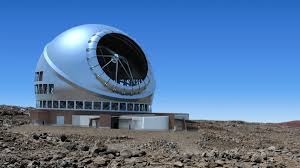Washington: India, America, Canada, China and Japan are working together on an international project for research on space and the universe. Its name is Thirty Meter Telescope (TMT). The TMC project, which represents international cooperation, aims to revolutionize the way space is studied. Through its giant 30-meter primary mirror and advanced adaptive optic, TMT will give scientists a chance to see incredibly cosmic objects while pushing the boundaries of knowledge.

According to Firstpost report, the Thirty Meter Telescope is actually a giant telescope, designed to answer some of the most basic questions about the universe. This will help us understand how the first galaxies and stars were formed after the Big Bang, how supermassive black holes were formed, how stars and planetary systems were formed and what are the characteristics of planets outside the solar system.
The project’s location is yet to be decided
The initial goal of this project was to build a telescope on Mauna Kea in Hawaii, USA, which is a great place from the point of view of astronomy. This plan had to face opposition from the people of Hawaii, who consider this site sacred. Because of this, it is being considered to start it at places like Observatorio del Roque de los Muchachos in the Canary Islands of Spain.
The TMT will be equipped with high-tech instruments such as the Infrared Imaging Spectrometer (IRIS) and the Wide-Field Optical Spectrograph (WFOS). These instruments are designed to make a wide range of observations, increasing the telescope’s ability to achieve its scientific goals. A distinctive feature of the TMT is its mirror system. The primary, made up of 492 segments, extends up to 30 meters in diameter. This is followed by a secondary mirror made up of 118 smaller hexagonal segments and a tertiary mirror. This sophisticated system is to capture detailed pictures of distant cosmic objects.

India’s important role in TMT project
Indian scientists have played a major role in this effort. Indian scientists have developed an open-source tool that creates an infrared star catalog for TMT’s Adaptive Optics System (AOS). This tool is the key to the telescope’s ability to make sharp and clear images by compensating for distortions caused by the Earth’s atmosphere. Institutions such as the Indian Institute of Astrophysics (IIA) in Bengaluru, the Inter-University Centre for Astronomy and Astrophysics (IUCAA) in Pune and the Aryabhatta Research Institute for Observational Sciences (ARIES) in Nainital have contributed hardware, equipment, software to the TMT project. Apart from this, India has also provided a fund of $ 200 million.

The tool created by Indian researchers helps TMT’s Adaptive Optics System deal with atmospheric distortions by creating an all-sky NIR star catalog. This catalog is important for the best performance of the telescope. Researchers at IIA in Bengaluru, led by Dr Sarang Shah, developed an automated code to generate this catalogue, allowing TMT to use natural guide stars (NGS) to correct for atmospheric effects and ensure successful operations. The TMT project is a great example of international collaboration.




